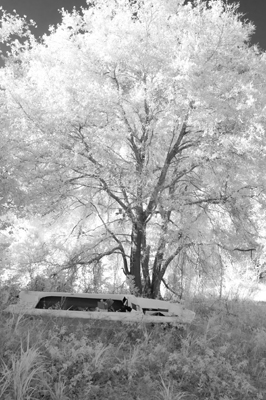 Stage 1: Fear
Stage 1: Fear
The old highway to San Vicente is nothing more than a dirt road. At the height of the dry season the landscape is leached of color, the road pale as bone. We bump in and out of potholes, my American advisor filling the Peugeot with 400 years of Costa Rican history: the Chorotegan Indians, the Spanish conquistadors, ceramic arts, tourism. Dust billows through the open windows, and I cough, struggle to catch my breath. Against the vinyl seat, my legs are slick with sweat.
Stage 2: Uncertainty
I stare into the smiling faces of my host family and laugh when I don’t understand their rapid Spanish. “¿Cómo?” I ask, again and again. The youngest boy is thirteen. He watches me eat my rice and beans on the front porch, his dark eyes amused. “What?” I ask, but he shakes his head. After two weeks he finally he tells me: “You are as white as a milk worm.”
Stage 3: Enthusiasm
Behind the house, Betty fills the mouth of the metal grinder with kernels of wet corn, and I turn the handle, my arm pumping in circles. Strings of dough spill into the wide bowl below, but Betty says, “Más rápido, hija.” Faster, daughter. I smile and crank the handle as fast as I can. When I’m finished, I sit in the cracked rocking chair, my shoulder aching, and watch as Betty kneads the dough smooth, spinning a handful between her palms until it’s a disk. She rearranges the burning logs until flames engulf the lip of the comal, and when she drops the tortilla into the concave plate, it sizzles loudly. She motions to it with her lips. “Do you want to flip it?” I nod, eager for an opportunity to earn the name hija. But the fire is hot on my face and arms, and I pause too long. Smoke begins to curl from the comal. Betty gently pushes me aside and flips the burning tortilla with her fingertips.
Stage 4: Withdrawal
In the late afternoon, I sit on the front porch with a cup of sweetened coffee, hoping for a breeze as I wait for the cañero truck to mark the end of another day. Before I see it, I hear it: the rumble of its diesel engine, the clatter of wood and metal bouncing over pot holes, jostling the men in the tarp-covered cajón. As it drives by, I can’t make out the men’s faces; all I see are hands and arms, disembodied, jutting into the still-hot sun. These appendages are dark and muscled from twelve hours a day slashing tall stalks of sugar cane to the ground. Sometimes as the truck passes, someone raises a finger or two, and I raise my hand in response. But mostly their hands stay where they are, holding tight to the wooden planks, steady against the bucking of the truck.
Stage 5: Understanding
In the semi-darkness of the dance hall, I sit next to Sara, my host sister. The band has finished its set, and for the next fifteen minutes, the stereo will blare music: salsa, merengue, and piratiado, my favorite. I take a sip of beer, and when I look up, the lead singer of the band is standing before me, arm outstretched, palm open. I have watched this man dance with women between sets in San Lázaro, Guatíl, and Las Pozas. I have watched the way he twirls his partners, floats them across cement dance floors. Tonight, no one else is dancing. I swallow hard and resist the urge to shake my head. I take his hand, and when we step into the middle of the room, I hear a murmur: la gringa. I try to focus on his palm against my lower back, his fingers clasping my own, the old-fashioned music. I have practiced. I am ready when he turns me, our feet forward and back together. And as he spins me around and around, I catch Sara’s eye and smile. She raises her eyebrows and nods approvingly. I recognize faces in the darkness outside, pressed against the chain-link fence. A thumb goes up. Someone yells, “Bravo, Katty!” When I sit back down at the table, I’m beaming. “Now I’m a real sanvicenteña,” I say breathlessly. “Sí,” says Sara. “For now.”
—
Kate Hopper teaches creative writing online and at The Loft Literary Center in Minneapolis. Her writing has appeared in a number of journals and magazines, including Literary Mama, mamazine, and The New York Times online. She is working on two books: Ready for Air, a memoir about learning to live with uncertainty in the wake of her daughter’s premature birth; and Mother Words: A Writing Guide for Mothers. Her next book, In the Arms of Saint Vincent, will be based on life-history research she conducted in San Vicente, Costa Rica. She writes about reading, writing, teaching, and motherhood on her blog, Mother Words: Mothers Who Write. She is Literary Reflections co-editor at Literary Mama.
Photo by Pamela Z. Daum
